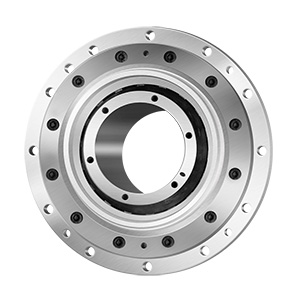Repeatability and Accuracy Determining How Successful A Robotic Application Will Be.
Release time:2022-05-17 11:29:48 Browse volume:432 【Return】
What is Accuracy?
Accuracy is the ability of the robot to precisely move its end effector to a desired position in 3-D space, it measures the error or the difference between the desired outcome and the outcome that actually took place.
For example, if the specified movement is 756 mm ± 2mm, and the system consistently moves to 758.5 mm over several attempts, it is repeatable, but not accurate.
The Importance of Accuracy
When a manufacturer is shopping for a great robot for their production line, accuracy is one of the features they look at first.
Accuracy is extremely important in the majority of robotic application, especially when it comes to welding and material removal.
New applications, such as medical surgery, require robots that are both accurate and repeatable.Robotic orthopedic surgery may only be done under high accuracy.
What is Repeatability?
Precision, also referred to as repeatability in robotics, is the ability of an industrial robot to bring its end effector to the same position and orientation, over and over again, simply, its ability to achieve repetition of the same task.
Pick-and place, spray painting or welding may be highly dependent of repeatability, Industrial robot repeatability varies from model to model, but most fall within a range of +/- 0.02 mm to +/- 0.4 mm. The lower the number the higher the repeatability of the robot.
Unlike accuracy, which is somewhat subjective depending on the application requirements, repeatability is an absolute value.
Importance of Repeatability
In industrial automation, the robot’s effectiveness is measured by the characteristics of precision and repeatability. It is very important that, in the productive process, the same task can be carried out continuously while maintaining the same level of precision, which would be the objective to be achieved.
In quality tests, one of the most important requirements is that the results be reliable and precise. Factors that determine satisfactory results for customers are the repeatability of the system, its capacity to repeat the same task is an indicator that the results may be reliable and that the test is being done correctly through repeatability that guarantees that the result has been tested.
Difference Between Accuracy and Repeatability
Accuracy and repeatability are different measures which are derived and calculated indicating that high repeatability is more desirable than high accuracy in daily applications with industrial robots.
Repeatability is usually the most important criterion for a robot. ISO 9283 sets out a method whereby both accuracy and repeatability can be measured.
Typically a robot is sent to a taught position a number of times and the error is measured at each return to the position after visiting 4 other positions. Repeatability is then quantified using the standard deviation of those samples in all three dimensions.
If an application involves cycled point-to-point motion or exact length motion as with high-precision parts machining, then both accuracy and repeatability are required.
Those new applications, such as medical surgery, require robots that are both accurate and repeatable.
Factors that Decide and Influence Accuracy and Repeatability
“The main factor affecting precision in an industrial robot is the gearboxes in its joints,”
Robot repeatability is achieved when the main components of an industrial robot operate together. These include the gears, controller, motors, and axes. The gears of a robot’s joints play the biggest role when it comes to determining a robot’s precision. Robot’s with small and rigid gearboxes typically have a lower margin of error.
Reducer backlash, sensor and servo precision are some of the factors influencing robot repeatability. The major contributing factors that most influence repeatability are within the mechanics of the drive system, say the precision of the bearing ways and the backlash in the system. Repeatability affects how identical parts may differ slightly.
There are many factors that contribute to the accuracy of a system, the most significant ones are the mechanical factors such as backlash, “windup” (lack of torsional stiffness), and flexing of components, the accuracy of the motor. The backlash exists in gear mechanisms, and in actuators of hydraulic drives.
The final accuracy of a robotic system depends on its mechanical inaccuracies, the computer control algorithms, and the system resolution. The mechanical inaccuracies are caused mainly by backlash in the manipulators joints and bending of the links.
A higher rigidity of the links should not be achieved by a substantial increase in their mass. A larger mass causes an increase in the time response of the arm.
On the electrical side, the bandwidth of the control system and the resolution of the measuring system (encoder or resolver) can also affect the accuracy of the drive’s movement,
Also, accuracy is affected by external factors and can vary with speed and position within the working envelope and with payload. Repeatability can also be affected by changes in the system, such as expansion or contraction of components due to temperature fluctuations. While accuracy can be compensated for by programming within the drive amplifier and control, repeatability generally cannot be.
A robot's inaccuracy is attributed to three main factors:
Joint errors; Kinematic errors; Non-kinematic errors: the mechanical aspect of the robot’s parts, including the links and the gearboxes.
Repeatability and accuracy are key for determining how successful a robotic application will be.
How to Improve the Accuracy and Repeatibility?
Advancements in the technology of robotic vision systems ad robotic force sensors has helped to improve the precision of industrial robots. The accuracy can be improved through external sensing for example a vision system or Infra-Red, or through a specific operation called: robot calibration by customer. This means that the manufactured robot must still offer a good repeatability, since this characteristic can not be improved through calibration.
Improvement of the robots’ accuracy is divided into three categories, as determined by which group the errors are related to: Joint calibration, Kinematic calibration: Non-kinematic calibration: consist of modelizing the stiffness of the robot (including the temperature effects) and compensating for this back-lash.
Precision cycloidal reducer is the recommended gearbox that provides the outstandingly excellent accuracy and repeatability, through its full-contact transmission mechanism, cycloidal groove slots totally engage with steel rolling ball elements to achieve perfect precision, keep strong stiffness, and build long stable working life, most suitable for industrial, medical automation fields. HSOAR is the official brand to supply the precision cycloidal reducer to world top famous robot brand.

Download overall catalog at the following link:
http://en.china-hsoar.com/down/
erica.li@pcngb.com
上一篇:没有了!




